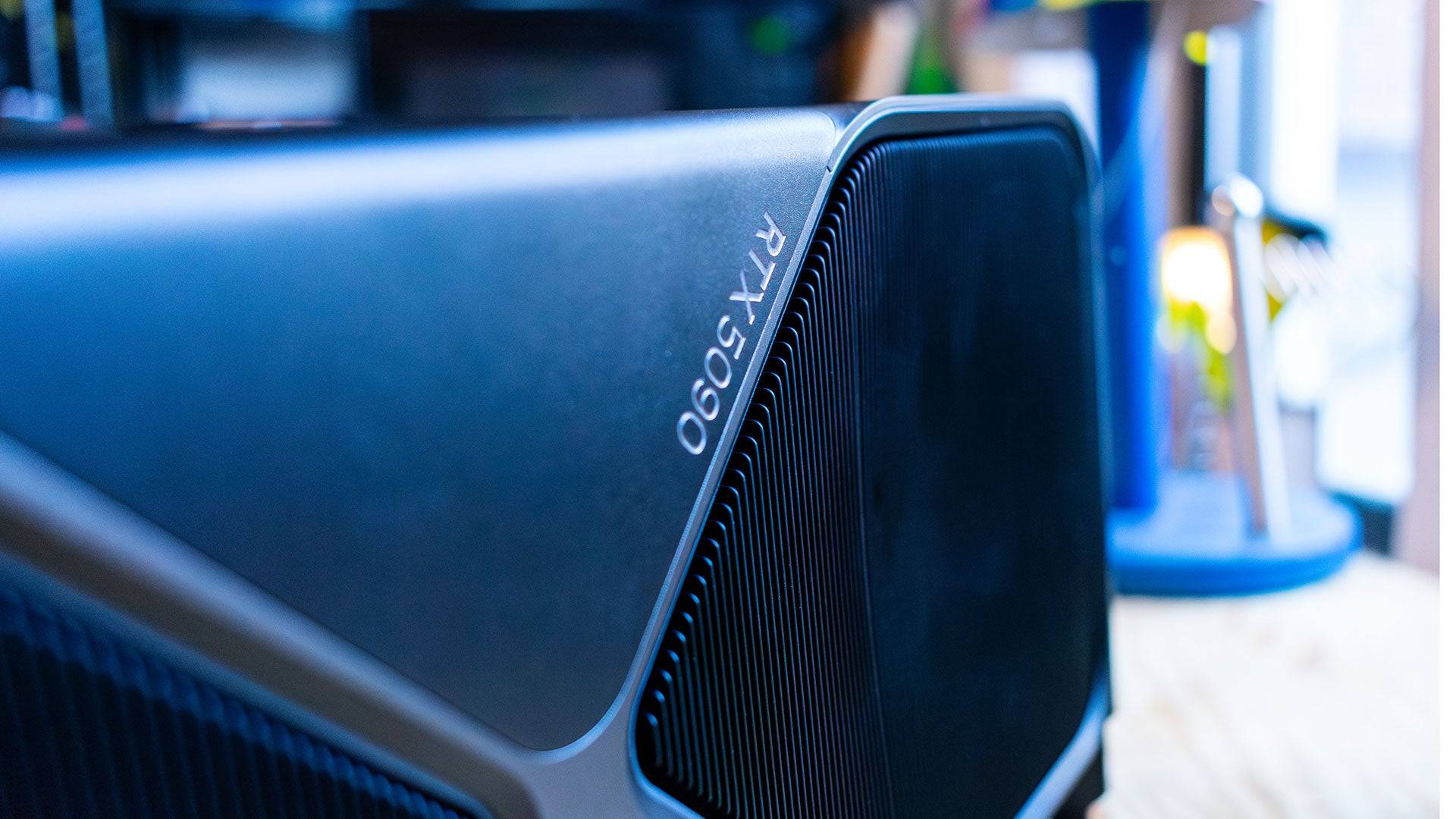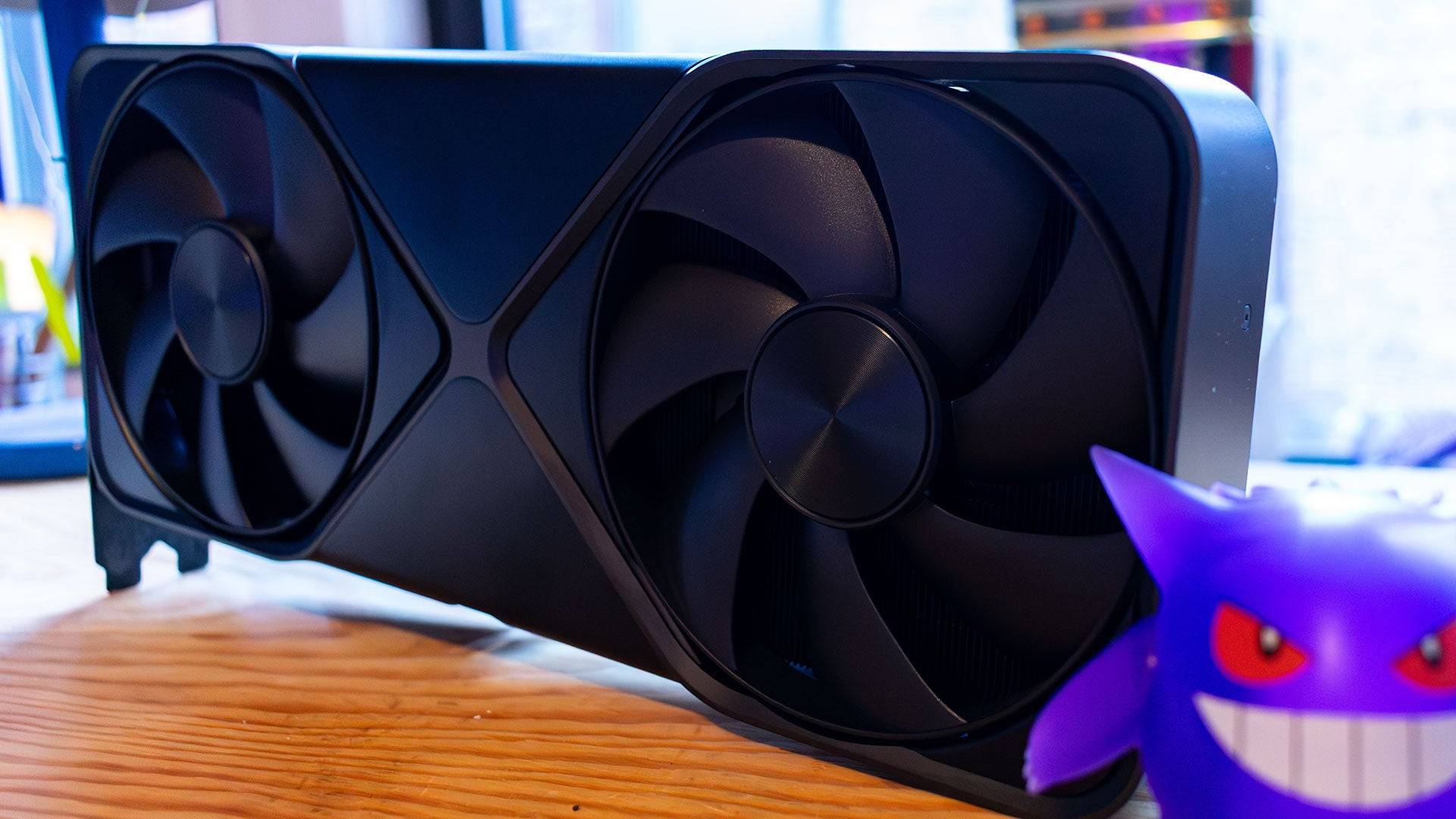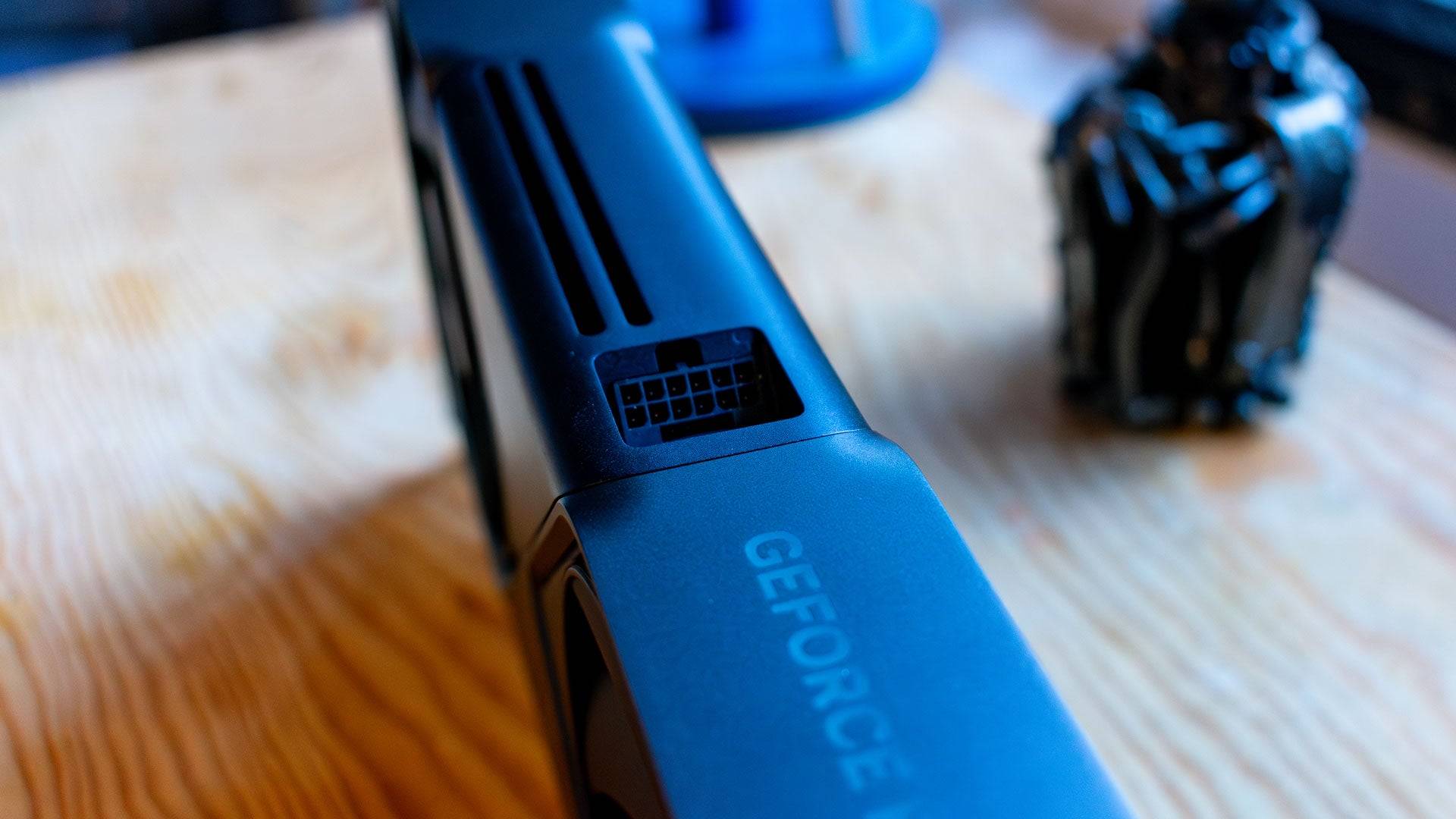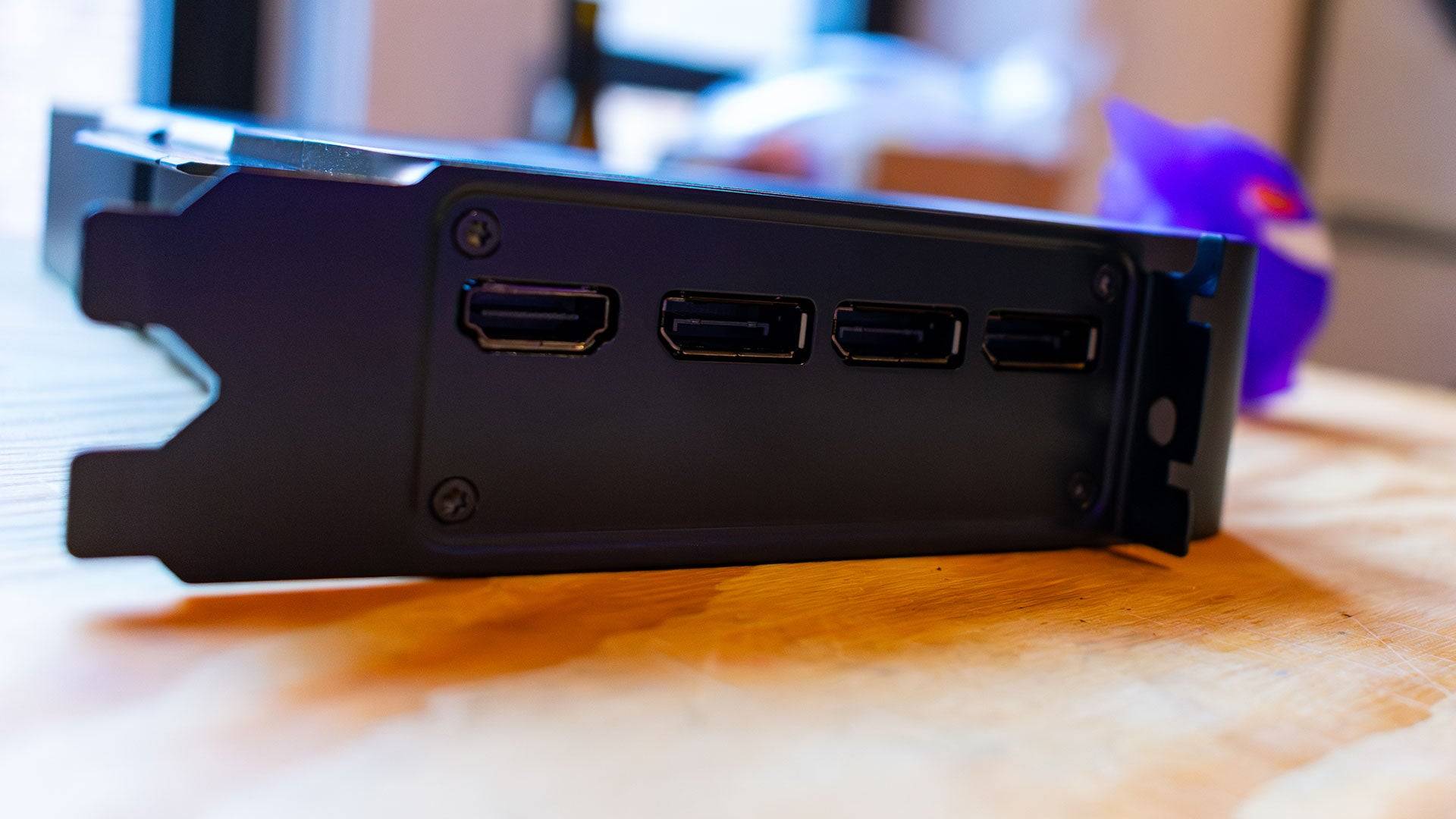Nvidia GeForce RTX 5090 Founders Edition Review
The Nvidia GeForce RTX 5090: A Next-Gen Leap Fueled by AI
Nvidia's RTX 5090 is the latest in a line of high-end graphics cards promising generational leaps in PC gaming. However, its performance gains are less straightforward than previous iterations. While raw performance improvements over the RTX 4090 are noticeable, they're not as dramatic as expected without considering DLSS Frame Generation. The real revolution lies in DLSS 4, which significantly enhances image quality and performance, surpassing typical generational jumps.
The RTX 5090's value proposition depends heavily on your gaming setup and preferences. For users with monitors below 4K resolution or 240Hz refresh rates, the upgrade is likely unnecessary. But for those with high-end displays, DLSS 4's AI-generated frames offer a glimpse into the future of gaming.
Nvidia GeForce RTX 5090 – Image Gallery

 5 Images
5 Images


RTX 5090 – Specifications and Features
Built on Nvidia's Blackwell architecture (also powering AI data centers), the RTX 5090 excels in AI-related tasks. However, non-AI aspects haven't been neglected. The card boasts a significant increase in Streaming Multiprocessors (SMs) and CUDA cores (21,760, a 32% jump from the RTX 4090), resulting in substantial raw gaming performance.
Each SM retains four Tensor Cores and one RT Core, but the 5th-generation Tensor Cores are optimized for AI, supporting FP4 operations for improved VRAM efficiency. The card also features 32GB of GDDR7 VRAM, a generational upgrade from GDDR6X, offering increased speed and power efficiency. Despite this, the RTX 5090 consumes a substantial 575W, exceeding the RTX 4090's power draw.
DLSS 4 leverages the improved Tensor Cores, shifting the algorithm to a Transformer Neural Network (TNN) instead of a Convolutional Neural Network (CNN). While frame rates aren't necessarily impacted, Nvidia claims improved image quality and reduced artifacts. Furthermore, Multi-Frame Generation, a refined version of DLSS 3's Frame Generation, generates multiple frames from each rendered image, drastically increasing frame rates (but best used with already acceptable frame rates).
Purchasing Information
The Nvidia GeForce RTX 5090 launched January 30th, starting at $1,999 (Founders Edition). Third-party models will likely command higher prices.
Founders Edition Analysis
The 575W power requirement necessitates robust cooling. Surprisingly, Nvidia managed to fit this into a dual-slot, dual-fan design, smaller than its predecessors. Temperatures peaked around 86°C during testing (578W power consumption), not high enough to cause throttling. This compact design is achieved by centrally positioning the PCB and utilizing a heatsink spanning the card's width, drawing air from the bottom and expelling it through the top. The card lacks exhaust vents under the rear ports.
The design aesthetics are consistent with previous generations, featuring a silver 'X' and a lit 'GeForce RTX' logo. The power connector is a new 12V-2x6, supposedly more efficient than the previous generation, and includes an adapter for four 8-pin PCIe connectors. The angled connector placement improves cable management.
DLSS 4: Addressing "Fake Frames" Concerns
Nvidia boasts up to 8x performance boosts, though the actual increase is less dramatic. While the RTX 5090 offers raw rasterization improvements, the true next-gen benefit is its frame generation capabilities. DLSS 4's Multi-Frame Generation, powered by a new AI Management Processor (AMP) core, allows for more efficient frame generation, producing three AI frames per rendered frame. The AMP's Flip Metering algorithm minimizes input lag. This technology requires a strong baseline frame rate to avoid latency issues and pairs best with DLSS upscaling.
At launch, DLSS 4 supported a range of games (75 claimed). Testing in Cyberpunk 2077 and Star Wars Outlaws (beta builds) showed impressive results, with frame rates significantly boosted (e.g., Cyberpunk 2077 at 4K with ray tracing reaching 286 fps with 4x frame generation). While some minor artifacts were observed, Multi-Frame Generation proved effective.
RTX 5090 – Performance Benchmarks
The RTX 5090's performance is impressive but complex. 3DMark benchmarks showed significant improvements over the RTX 4090 (up to 42%). However, real-world game testing revealed CPU bottlenecks, even at 4K with a high-end CPU (Ryzen 7 9800X3D). The generational leap was less pronounced in many games (around 10% in some cases). Games without ray tracing or upscaling showed more significant improvements (e.g., Total War: Warhammer 3). One outlier was Assassin's Creed Mirage, exhibiting performance issues potentially due to driver bugs.
[Benchmark tables and charts would be included here]
Conclusion
The RTX 5090 is undeniably powerful, currently the fastest consumer graphics card. However, its performance advantage over the RTX 4090 is less substantial in many current games due to CPU bottlenecks. Its true potential lies in its AI-powered frame generation, making it ideal for users with high-refresh-rate, high-resolution displays who are willing to embrace AI-enhanced gaming. For most users, the RTX 4090 remains a powerful option for the foreseeable future.
-
 Jan 27,25Roblox: Bike Obby Codes (January 2025) Bike Obby: Unlock Awesome Rewards with These Roblox Codes! Bike Obby, the Roblox cycling obstacle course, lets you earn in-game currency to upgrade your bike, buy boosters, and customize your ride. Mastering the various tracks requires a top-tier bike, and thankfully, these Bike Obby codes deliver
Jan 27,25Roblox: Bike Obby Codes (January 2025) Bike Obby: Unlock Awesome Rewards with These Roblox Codes! Bike Obby, the Roblox cycling obstacle course, lets you earn in-game currency to upgrade your bike, buy boosters, and customize your ride. Mastering the various tracks requires a top-tier bike, and thankfully, these Bike Obby codes deliver -
 Feb 20,25Where to Preorder the Samsung Galaxy S25 and S25 Ultra Smartphones Samsung's Galaxy S25 Series: A Deep Dive into the 2025 Lineup Samsung unveiled its highly anticipated Galaxy S25 series at this year's Unpacked event. The lineup features three models: the Galaxy S25, S25+, and S25 Ultra. Preorders are open now, with shipping commencing February 7th. Samsung's web
Feb 20,25Where to Preorder the Samsung Galaxy S25 and S25 Ultra Smartphones Samsung's Galaxy S25 Series: A Deep Dive into the 2025 Lineup Samsung unveiled its highly anticipated Galaxy S25 series at this year's Unpacked event. The lineup features three models: the Galaxy S25, S25+, and S25 Ultra. Preorders are open now, with shipping commencing February 7th. Samsung's web -
 Jul 02,22Isophyne Debuts as Original Character in Marvel Contest of Champions Kabam introduces a brand-new original character to Marvel Contest of Champions: Isophyne. This unique champion, a fresh creation from Kabam's developers, boasts a striking design reminiscent of the film Avatar, incorporating copper-toned metallic accents. Isophyne's Role in the Contest Isophyne ent
Jul 02,22Isophyne Debuts as Original Character in Marvel Contest of Champions Kabam introduces a brand-new original character to Marvel Contest of Champions: Isophyne. This unique champion, a fresh creation from Kabam's developers, boasts a striking design reminiscent of the film Avatar, incorporating copper-toned metallic accents. Isophyne's Role in the Contest Isophyne ent -
 Jan 11,25Jujutsu Kaisen Phantom Parade: Tier List Revealed This Jujutsu Kaisen Phantom Parade tier list helps free-to-play players prioritize character acquisition. Note that this ranking is subject to change with game updates. Tier List: Tier Characters S Satoru Gojo (The Strongest), Nobara Kugisaki (Girl of Steel), Yuta Okkotsu (Lend Me Your Stren
Jan 11,25Jujutsu Kaisen Phantom Parade: Tier List Revealed This Jujutsu Kaisen Phantom Parade tier list helps free-to-play players prioritize character acquisition. Note that this ranking is subject to change with game updates. Tier List: Tier Characters S Satoru Gojo (The Strongest), Nobara Kugisaki (Girl of Steel), Yuta Okkotsu (Lend Me Your Stren
